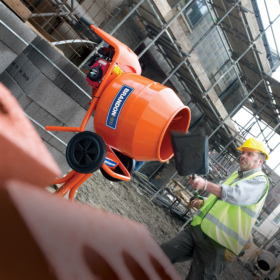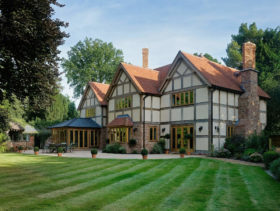
Get your project off the ground with our next virtual training workshop - October 28th at 7pm!
Use code BUILD for 20% off
Get your project off the ground with our next virtual training workshop - October 28th at 7pm!
Use code BUILD for 20% offWith the first recorded mud buildings dating back to 8,000BC in Jericho, cob building – building with mud – has a long history. In fact more than 30 per cent of the world’s population still live in buildings that are built of earth.
The material is now making something of a comeback in the developed world, thanks to its worthy eco credentials. Mud is extracted from clay, mixed with water, aggregate and straw and then built into a house. Such simplicity obviously leaves a small carbon footprint, but a building like this will need regular maintenance, with an annual lime wash being a must. You’ll also need a ready supply of clay. If you live in an area with no clay subsoil or where it gets excessively cold for long periods of time, then cob building is not for you.
Cob building is usually best served by building in the round, and it can be sculpted into all sorts of free-form curves and shapes, giving a lovely, organic shape. Most people thinking of cob building for the first time will be self-builders, but it is possible to use the services of professional cob builders.
Whichever route you choose, it’s worthwhile consulting with experts in the field or with experienced cob self-builders. It’s also advisable for a first-timer to try a small project such as a wall or summer house. While the raw materials are very cheap – if not free – cob building is an incredibly labour intensive way of building and it takes both time and energy. It lends itself to a large labour force, so getting friends and family involved is well worth while if you can persuade them.
Essentially cob is made from the clay that is found in the subsoil underneath the topsoil, and to produce cob you need to dig down to this layer and analyse the clay content of your subsoil to see if it’s suitable. To make a good, strong building material you need between 15-25 per cent clay mixed with between 75-85 per cent sand/aggregate mixed with water.
Depending on the content of your subsoil you will need to add more or less of these materials. Getting the balance of your mix right is essential, and it’s worth creating different batches to experiment with and to get to grips with the material cialis cost. Clay itself is unstable and will shrink and swell with changes in its water content, so mixing it helps create stability.
The ideal way to build is to have a source of clay on site or at least very close to it. If not, you will need to source it, for example, in excavated subsoil that would otherwise be dumped – most specifically from the digging of foundations on large building sites.
The final ingredient you need for cob is fresh, long straw (not hay), but it must be dry – once damp its strengthening function is compromised. On top of strength, the straw helps absorb movement and spreads out stresses, creating numerous hairline cracks rather than single, large cracks that are likely to splinter a wall in two.
Mixing the material is dependent on time and finances – you can mix on a tarpaulin using your feet or use a JCB to help you. Be warned, though that mixing cob is a time consuming skill. It’s worth getting help in or buying a good guide book to help you with mixing techniques as it’s an enormously important process, see the contacts for more information.
Cob buildings are traditionally laid on stone foundations bound by lime mortar or even poured limecrete. The building tools you’ll need are fairly simple, forks, spades and wooden thwackers – all of which are easily obtained or can be homemade. Constructing cob walls is hugely time consuming. Even when a cob home is built it dries from the outside in, so it can take up to a year for a building in our climate to dry out.
Electricity and plumbing need to be factored in at an early stage, and be aware that leaks could compromise the cob, so ensure good access to pipes is factored in throughout your build.
As with all builds, it is necessary to get planning permission and satisfy Building Regulations. While this may be complicated there is no reason why you should fall short of meeting the Building Regulations, but obtaining planning permission will depend on the outlook of your local planning office. When approaching the planners it’s worth finding and photographing local cob buildings to help support your planning application – a local heritage group may be able to point you in the right direction.


Comments are closed.